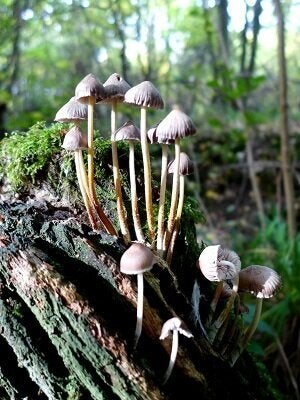
Like a lot of Brits I'm leery about picking wild mushrooms. Hedgerow fruit, no problem. Wild garlic, absolutely. But in spite of the fact that I often picked field mushrooms with my dad when I was a child, I'm funny about funghi. Too many Agatha Christie novels at a formative age, perhaps, along with a yawning gap of ignorance.
"Mushrooms have got a bad PR agent, that's all," says Carl Shillingford, a Michelin-trained chef who runs foraging courses and a wild food pop-up restaurant in Suffolk. "There are about 4,000 visible fungus in the British Isles. Half of them are just inedible, some 200 are poisonous and about 12 are deadly: one bite, 50 grammes and you've got a 90% mortality rate. So the danger is there." Erm, you're not selling them to me so far, Carl.
But his point is that lots of things can be potentially poisonous, from fruits to roots and shoots. We happily pick berries and nuts from hedgerows because we have a long familiarity with them and know they're safe and good to eat. We just need to apply the same logic to wild mushrooms and learn which ones we can eat and which we can't. (The funghi in the picture above, by the way, are inedible.)
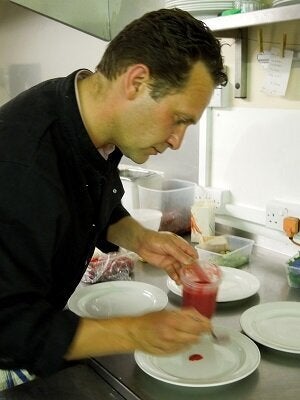
"Once you've got an understanding of what it is, where it's from, how it grows, you've got less fear of picking and enjoying. Everyone has picked from the wild, even if it's a blackberry off a bush. It's getting over that psychological barrier that if it's not in a little packet, hasn't got a sell-by date on, can you eat it? Of course you can. And some of the textures and flavours you get from these wild mushrooms are just phenomenal. You cannot get these in the supermarkets or the shops," says Carl.
Having eaten at his restaurant, Shillingford's, I have to agree. Twice a week he takes over an upstairs room at the Quay Theatre in Sudbury in Suffolk. There's just Carl in the kitchen and his wife Beth front-of-house. The food the night we ate there included wild mushrooms and herbs, seagrass and samphire, pigeon and venison. The menu is split into categories rather than courses: vegetable, fish, meat, dessert. The highlight for me was a meaty wild mushroom ragout with a flavour and texture you just can't get from cultivated mushrooms.
"It's not 100 per cent foraged, I don't want it to be, I don't want to pigeon-hole myself," Carl says. "I'd probably say for nine months of the year about 75 per cent is foraged. I'm doing seven days a week, collecting as much I can, pickling, preserving, doing all the old-school stuff. That can carry you through the winter months. But you can get mushrooms every month, even sometimes if you need to break them off because they're frozen!"
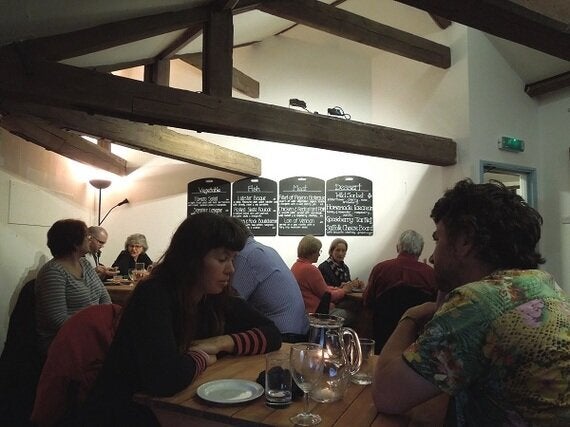
"There's a reason for cultivation. If you go and pick wild strawberries, it's 20 minutes of back-breaking work and you look in your hand and you've got about 100 grammes of this mushy fruit. But what you've got is the raw flavour of the strawberry. It might take a little bit more work to make a beautiful cordial out of it or a lovely sorbet, something that really shows off the fruit at its best.
"But that's what I like, the raw flavours of the food that hasn't been messed around with by some big conglomerate. It's just you, picking the food and then cooking it for people, straight onto the plate. It doesn't get better than that."
And he is scathing about those who say that wild food is just a yuppie fad. "I want to make this very clear. Foraging is not a middle-class activity. You need zero cash for it. We all have to eat every day. Foraging is about making that little bit of extra effort and thinking about what you put into your mouth, what you enjoy and what you eat."
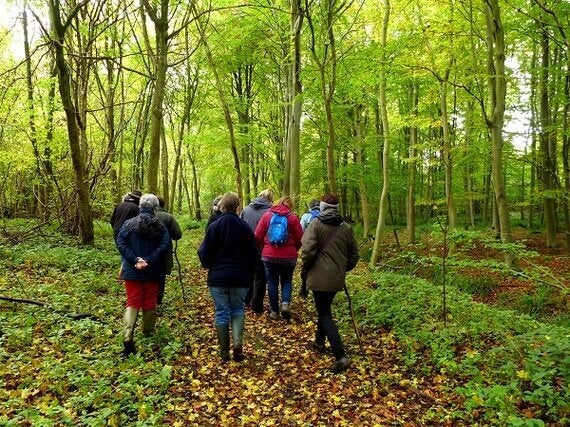
I booked myself onto one of the mushroom forays Carl runs through Suffolk Market Events. A dozen or so of us, wearing wellies and waterproofs, met on a gloriously sunny autumn day at the edge of a birch wood near Lavenham. Carl and his foraging partner, ecologist and mushroom grower Matthew Rooney (pictured below), took us for an instructive ramble through the woodland. Their fondness for funghi is contagious.
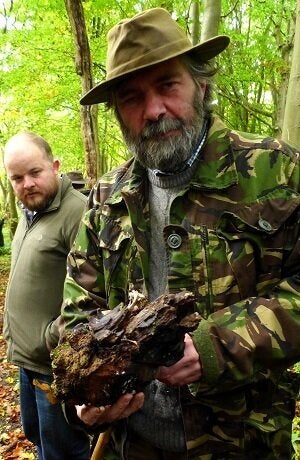
Within minutes we were skipping around like under-10s on a school outing, rummaging through fallen leaves and around rotting logs and trotting back with our fungal finds for identification. Inevitably, of course, everything I found was inedible, though others were both luckier and more observant.
Somewhat to my surprise, the cartilaginous wood ear mushroom is edible and so is the honey fungus, something every gardener dreads finding on their patch as it is parasitic and notorious both for killing trees and being hard to eradicate. Eating it is one solution I'd never considered before.
The funghi foray is an eye-opener. Once you start looking, there are funghi everywhere and as one woman remarks: "Usually when I go for a walk in the woods I'm looking at the trees and the sky. From now on I'll be staring at the ground."
We take our haul back to Lavenham Farmers' Market where in an upstairs room Matthew sorts the mushrooms and Carl starts cooking them. I tried to take photographs of each dish as he prepared them but the groans of dismay from my fellow foragers put a bit of a crimp in my artistic endeavours. Everyone was dying (just joking) to try them. I can report, hand on heart, that they were delicious and I'm planning a version of the tortellini next week, although I can't promise it'll contain Meadow Wax Caps.

We went home with goody bags filled with mushroom-related products and a batch of Carl's sourdough starter (he makes a mean mushroom bread).
He's promised to take me fishing for American crayfish next year, those transatlantic interlopers that have infested our rivers and have been killing off our native species. They're nasty little nippers but they taste amazing and eating them means I'll be doing my bit for British ecology. I can't wait.
All images blogger's own